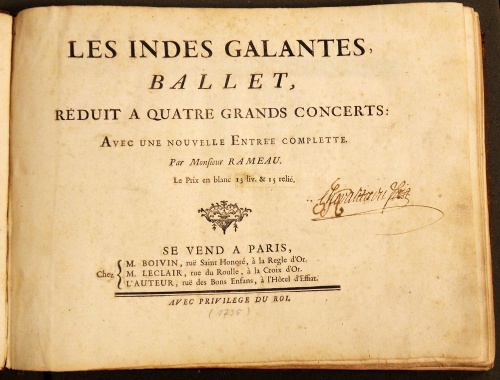A semiotics of sex roles in French society was played out in 18th- and 19th-century ballet by projecting it onto imaginary Native American societies.
In the 18th century, sauvage culture became a canvas for the projection of utopian sentiment with subtle social texturing, allowing the expression of fantasies of less restrictive sexual roles; in the 19th century, sauvagerie became grotesque and increasingly unrefined, shifting the emphasis from cultural to racial difference and affirming the status quo.
This according to “Sauvages, sex roles, and semiotics: Representations of Native Americans in the French ballet, 1736–1837” by Joellen A. Meglen (Dance chronicle XXIII/2 [2000] pp. 87–132; XXIII/3 [2000] pp. 275–320).
Above and below, Rameau’s Les Indes galantes (1735).
Related article: Rameau’s American dancers




Pingback: Rameau’s American dancers | Bibliolore
Pingback: The postmodern ballerina | Bibliolore
Interesting. Hadn’t come across term, “sauvagerie” before as such, but presumably this ties in with Enlightenment conjectural history ideas – we had people looking at Highland Scottish culture because it was seen as primitive, wild and natural, hence conjecturing that this was what an earlier stage of culture was like. (Am rather more a musicologist than a historian, so I’m probably simplifying wildly …)